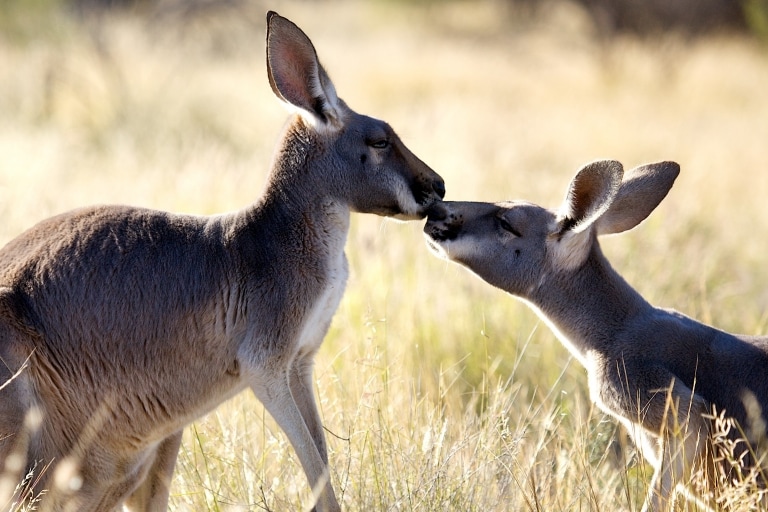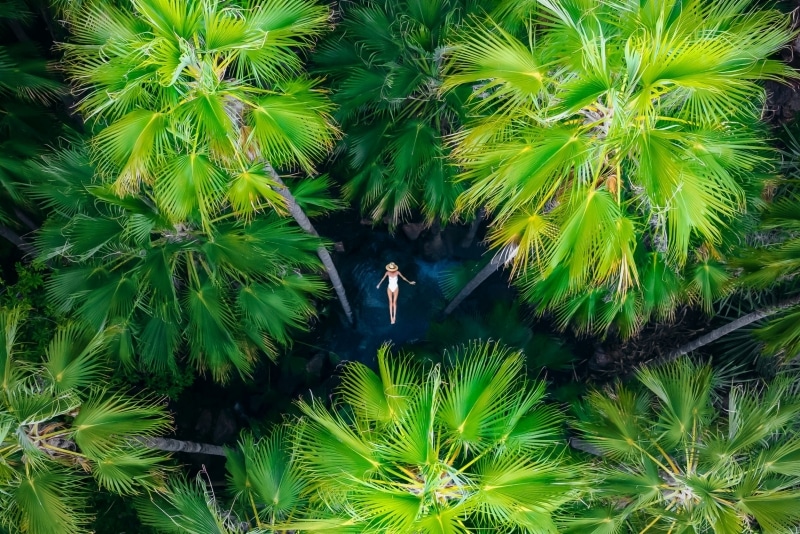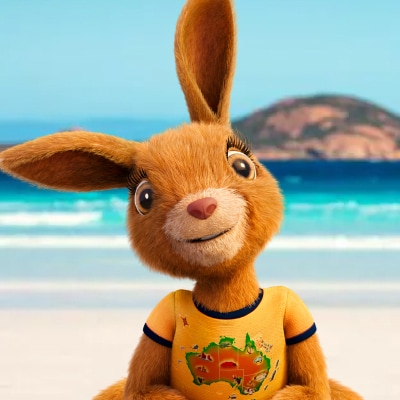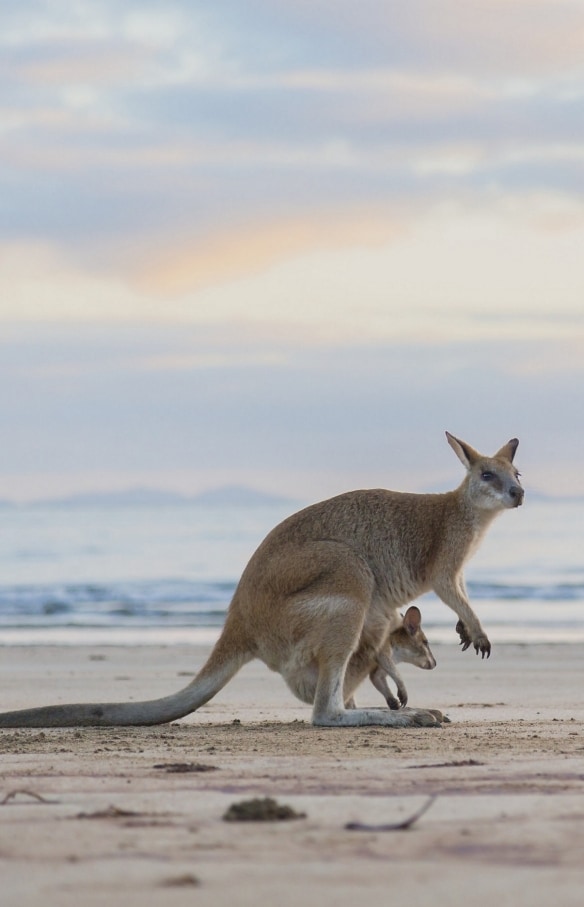
Where to meet Australia's cutest animals
From smiling quokkas to a parade of penguins, here’s where to say g’day to some of our cutest creatures.
If there’s one Aussie animal that will put a smile on your face, it’s the quokka. A 90-minute ferry ride from Perth will land you on Rottnest Island, home to the adorable quokka. Take a walking tour or jump on a bicycle to explore the island and spot its furry inhabitants. Quokkas are nocturnal, so the best time to spot them is around shrubs and grassy areas in the late afternoon. And don’t forget – they may be friendly, but they’re still wild animals.
Australia’s eastern eucalypt forests are home turf for one of our country’s sleepiest residents — the koala. Did you know these dozy marsupials nap for up to 22 hours each day? One of the best places to encounter koalas is on Raymond Island, located approximately 3.5 hours east of Melbourne. Here, a 2km (1.2mi) Koala Trail winds beneath towering gum trees. It’s among this fragrant foliage that you’re all but guaranteed to see a koala in their natural habitat.
Kangaroos thrive across a diverse range of Australian habitats and their total population is almost double that of people! This means there are plenty of opportunities to spot them, from quiet beaches to sandy deserts. For the chance to hold a rescued joey (baby kangaroo) and learn about their care and conservation, the Kangaroo Sanctuary just outside of Alice Springs is a must. On the guided sunset tour, you’ll also learn about rescuing injured wildlife.
Crossing paths with a wombat normally takes patience and a little luck. These keen burrowers blend in well with their surroundings and prefer to forage and graze at night. However, on Maria Island the wombat population is so robust that these marsupials have been described as a ‘tripping hazard’. Catch a 30-minute ferry from Triabunna on Tasmania’s east coast to see the wombats, go on hikes and enjoy a bit of convict history.
There are certain tricks to spotting a platypus in the wild. One is to visit their habitat at dawn or dusk, and another is to remain very quiet while on the lookout. Your best bet, however, is to leave it to the experts and join a guided tour. The Wait-a-While Rainforest Tour departs from Cairns and takes you into the world’s oldest continuously surviving rainforest to find the telltale signs of platypus activity.
Another shy but incredibly cute Australian creature is the echidna. These unique egg-laying mammals are known for their digging prowess and slow, rolling stride. The Koala Forest at Healesville Sanctuary in the Yarra Valley has a parade of echidnas roaming the forest floor on the hunt for grubs, ants and worms. To get even closer to these extraordinary monotremes, you can book the Echidna Experience and join a park ranger for a brief feeding.
At least 14 species of dolphins can be found feeding, frolicking and diving all along Australia’s coastline. If you’re keen to keep pace with these incredible swimmers, Dolphin Swim Australia offers a world first, where you’ll be harnessed to the slow-moving catamaran to swim alongside a wild pod of common dolphins. The playful pod darts and weaves at the bow of the boat, just metres from where you’re swimming. Tours depart from Port Stephens, a 2.5-hour drive north of Sydney.
They may look cute and cuddly, but Tasmanian devils earned their name from their thunderous growls, grunts and howls. Only found in the wild in Tasmania, these nocturnal carnivores can be hard to spot. Devils@Cradle is a conservation sanctuary in Cradle Mountain working to secure the survival of these rowdy marsupials. Book an after-dark feeding tour to see the devils in action or learn more about their young on the Joey Encounter Tour.
Off the coast of the Eyre Peninsula, a group of wild yet inquisitive Australian sea lions are eager to make your acquaintance. While it’s possible to see these intelligent marine mammals all along the country’s southern coast, the encounter with Calypso Star Charters is a nature lover’s dream. As you swim through the calm, shallow waters, the sea lions will play and dive nearby and perhaps even blow bubbles toward your snorkel mask.
As the sun sets on Phillip Island, a two-hour drive south of Melbourne, a parade of the world’s smallest penguin species fills the beaches. After a long day of fishing, these pocket-sized penguins waddle from the ocean back to their burrows. Little penguins can be found across the southern coast of Australia, from Tasmania to Western Australia, but Phillip Island is home to the world’s largest colony. To hear the chirping chorus of chicks in their nests, visit between December to February.









































































































































































